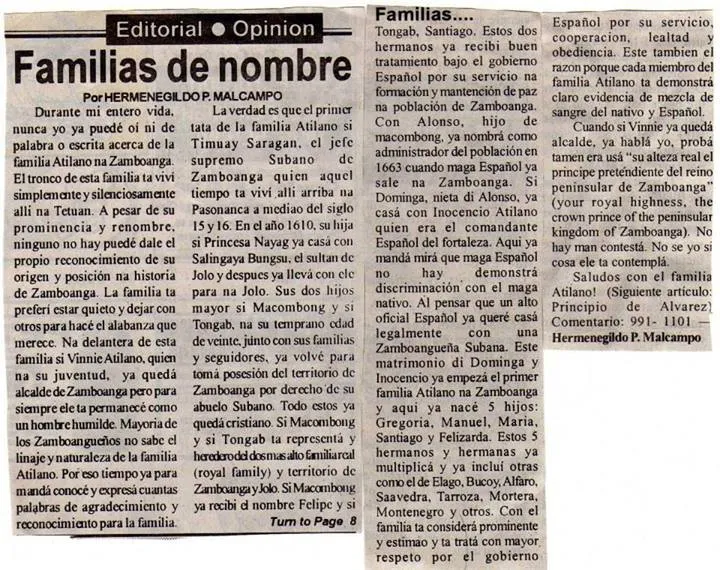While Le Petit Prince (The Little Prince) written by Antoine De Saint-Exupéry in 1943 now has over 300 translations in different languages worldwide and is now considered the world’s most translated book (not counting religious works), there have been surprisingly only two translations of his book in the Philippines (Filipino and Bicol). El Diutay Principe is only the third edition featuring a Philippine language. The Little Prince is a classic French novella about a pilot who gets stranded in the desert after a plane crash and encounters a little fellow who asks him to draw a sheep for him. Through the course of their meeting, the pilot rediscovers the true meaning of life and what people should value the most. When I came across the book in 2013, I found that I could relate very well to the negative image given to “growing up” in the book. When the idea to translate the book into my mother tongue was presented to me, I didn’t think twice. I thought, ‘a lot of people my ...
If you observe, there are no English, Tagalog, Cebuano, or Hiligaynon words mixed in the Chabacano used in the article.You do see English translations from time to time though notably only on very deep Chabacano words which is for the benefit of the readers.You even see some semblance of Spanish grammar in the usage of se instead of sabe and sus (dos hijos) instead of just su.
Here now is a translation made by my friend of this article to English:
Prominent Families
In my entire life, I have never heard any news, neither verbal nor written, about the Atilano family of Zamboanga. A branch of this family is living simply and quietly in Tetuan. Despite their prominence and renown, no one has been able to give them the proper recognition with regard to their origins and place in the history of Zamboanga. The family prefers to remain quiet and leave it to other people to offer the praises that they deserve.
Heading this family is Vinnie Atilano, who in his youth became the Mayor of Zamboanga, but has always remained humble. Most Zamboangueños are unaware of the lineage and nature of the Atilano family. And this is why it's time to let (this family) be known and to express some words of gratitude and acknowledgement to them.
The patriarch of the family was Timuay Saragan, the Subano supreme leader, who at that time lived up in Pasonanca in the mid-1500s and 1600s. In the year 1610, his daughter, Princess Nayag, married Salingaya Bungsu, the Sultan of Jolo, who later brought her to Jolo. Their two sons, Macombong and Tongab, in their youthful twenties and along with their families and followers, returned to take possession of the Zamboanga territory as rightful heirs of their Subano grandfather. They all converted to Christianity. Macombong and Tongab became representatives and heirs of the two leading royal families in the territories of Zamboanga and Jolo. Macombong adopted the name "Felipe" while Tongab took the name "Santiago."The two brothers were treated well by the Spanish government for fostering peace in the Zamboanga settlement. Alonso, son of Macombong, was named town administrator in 1663 when the Spaniards left Zamboanga. Dominga, a granddaughter of Alonso, married Inocencio Atilano, who was the Spanish commander of the fort. Through this union, the Spaniards showed that they did not discriminate against the natives - to think that a high-ranking Spanish official wanted to legally marry a Subano Zamboangueña. This matrimony between Dominga and Inocencio started the first Atilano family in Zamboanga and produced 5 children, namely, Gregoria, Manuel, Maria, Santiago and Felizarda. These five children multiplied in their unions with other families by the names of Elago, Bucoy, Alfaro, Saavedra, Tarroza, Mortera, Montenegro, among others. The Atilano family was prominent and loved and was treated with great respect by the Spanish government for their services, cooperation, loyalty, and obedience. This was also why each member of the family showed clear evidence of the mixture of native and Spanish blood.
When Vinnie became Mayor, I told him to also try using (for himself the salutation) "Your Royal Highness, the Crown Prince of the Peninsular Kingdom of Zamboanga." He did not reply at all. I do not know what he thought of it. Greetings to the Atilano Family!
Disclaimer: I just found the photo above online. It is not mine.

Wow, thanks for posting this! I hope you can also post some articles written in Chavacano like this one in the picture.
ReplyDeleteI hope I will be able to find more of these articles. :D
ReplyDeleteHola Jerome,Joaquin desde Espana.Varias preguntas.Has entendido tu el texto y traducido,en funcion de tu caracter chabacano de lengua materna o,porque hablas tambien espanol?..He visto en youtube,videos sobre la Celebracion del dia de la fundacion del Chabacano,he oido un discurso de un concejal y del alcalde Llobregat,a nivel politico se usa un chabacano distinto del que se habla en la calle?,porque este chabacano,el politico,como hispanohablante,lo entendia casi todo.Oigo que se ha implementado la ensenanza en Chabacano de los primeros cursos del colegio-escuela,es cierto?.Que tipo de Chabacano se ensena el criollizado con ingles,tagalo,visaya etc,en definitiva el de la calle (segun parece) u otro normalizado?.Ultimo,me parecia que en el acto de celebracion habia poca gente,no multitud como seria de esperar para un acto tan importante por vuestro idioma.Un abrazo y adelante Zamboanga!
ReplyDeleteHola Joaquin, si, es verdad, entiendo este articulo bien porque aprendo espanol.Los politicos, cuando hablan, usan palabras muy hondas. Creo que el Chabacano que se ensena en el colegio-escuela es solo los numeros, alfabetos, o sea los conceptos basicos.
ReplyDeleteMe abuelo es quien ya escribir por este articulo! WEEE
ReplyDeleteMi gusta..dyud...porque los palabras fue scribado mas acerca de español puro.ejemplos .el gramatisacion como español ...yo espero comprende me.gracias
Delete